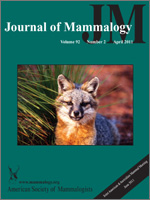Twinning is extremely rare in pinnipeds. Instances in which a female is observed simultaneously nursing 2 pups may represent alloparenting, or nonfilial nursing, a relatively common trait in pinnipeds. We explored the incidence of twinning in the Hawaiian monk seal (Monachus schauinslandi). We observed 7 sets of putative twins (i.e., an isolated female nursing 2 newborn pups) of 4,965 total births recorded between 1983 and 2008 (minimum twinning rate = 0.1%). Genetic specimens from the mother and both pups were available only for 5 of the 7 sets. Microsatellite genotyping revealed all of these to be dizygotic twins, with low probability of false assignment (P < 0.001). On average, Hawaiian monk seal twins were less likely to survive to weaning than singletons born in the same year and on the same island (P = 0.008). Those that weaned were smaller in size (i.e., axillary girths 1–4 SDs lower than singletons). In the critically endangered Hawaiian monk seal twinning appears to be a rare trait that results in overall lower survival rates but also offers a small opportunity for stock enhancement.
How to translate text using browser tools
15 April 2011
Dizygotic twinning in the Hawaiian monk seal
Jennifer K. Schultz,
Brenda L. Becker,
Thea C. Johanos,
Jessica U. Lopez,
Lizabeth Kashinsky
ACCESS THE FULL ARTICLE

Journal of Mammalogy
Vol. 92 • No. 2
April 2011
Vol. 92 • No. 2
April 2011
fecundity
maternal investment
microsatellite
Monachus schauinslandi
multiple maternity




